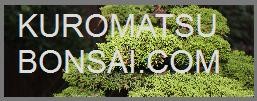European Cypress Bonsai
European Cypress Bonsai
“European Cypress “ is actually a name used for two species of tree. Both are used for bonsai, but neither is seen as a bonsai very often. European Cypress is a name often used for the Mediterranean Cypress, (Cupressus Sempervirens). The name “European Cypress” is also used in conjunction with another plant often sold as a live Christmas Tree, Chamaecyparis Lawsoniana, also known as Lawson’s Cypress or Port Orford Cedar. Trees in the genus Chamaecyparis are sometimes called false cypresses.
Background:
The Mediterranean Cypress, also known as Italian Cypress, has been used in landscaping since Roman times. Its tall, columnar form and predictable growth rate make it popular with architects and landscapers as a complement to most classic and modern forms of residential architecture. If your tree is slender and vase shaped, then it is a Mediterranean Cypress.
Lawson’s Cypress is native to the American Pacific Northwest, and is important to the timber industry. It was first classified by European botanists in 1854. The lumber is used by the Japanese in the construction of temples and other wood structures, as a substitute for the wood of the slower growing and closely related Hinoki Cypress. If your tree is conical in shape, then it is probably a Lawson’s Cypress.
Where to Get One:
The Mediterranean Cypress is sold in most landscape nurseries in temperate parts of the world in one and five gallon sizes. Lawson’s Cypress is sold as a living Christmas tree in many stores and nurseries in North America and Europe.
Potting and Soil:
Both of these trees are fast growers. If yours is not large enough to suit you, put it in a tub or in the ground and let it run for a year or two – but don’t leave it for too long. Both respond well to root pruning and top pruning. Soil should be about 70% aggregate and 30% organic matter.
Pests and Diseases:
Both of these trees have very good resistance to pests and diseases except one: A fungal disease called Cypress canker. This disease causes resinous lesions, and can girdle branches and kill adult trees. There is no known treatment other than to cut off the infected portion of the tree. It is not known if this disease affects bonsai or not.
Pruning and Styling:
Both of these trees are strong upright growers with straight trunks, and are primarily suited to formal upright styling, or planting in upright groups. For the Mediterranean Cypress, no other style is suggested, because its upright growth habit is so strong. For Lawson’s Cypress, informal upright styling may be possible, but why bother? Just get a Hinoki Cypress instead.
Closing Remarks:
These trees both make interesting bonsai, primarily because they are not often seen as bonsai. They may also make interesting conversation pieces for another reason. These trees are not for the superstitious or the faint of heart, because both trees have associations with death. The Romans always used the Mediterranean Cypress in funerary rituals, and the Japanese have used the wood of Lawson’s Cypress to make coffins.
